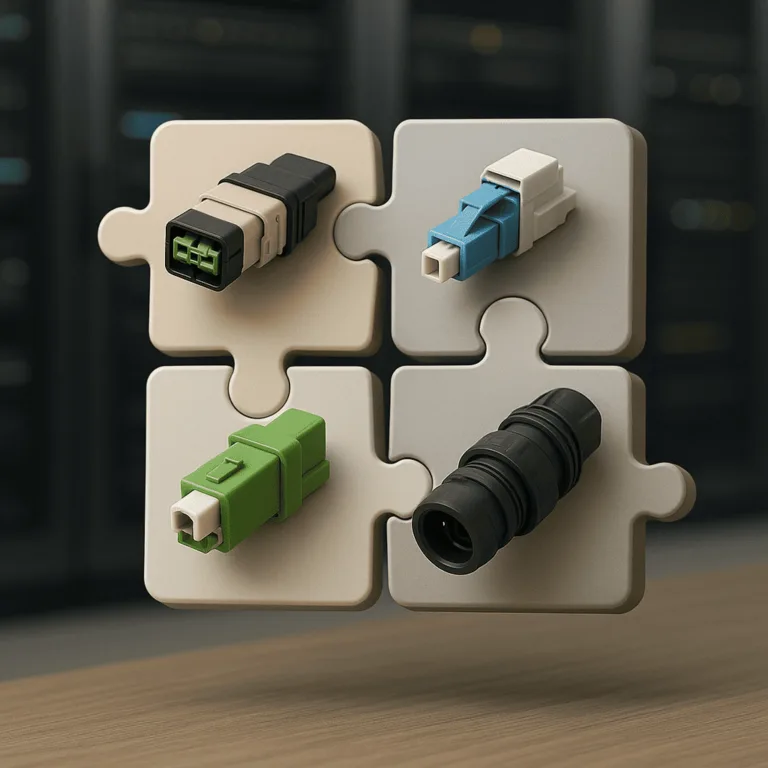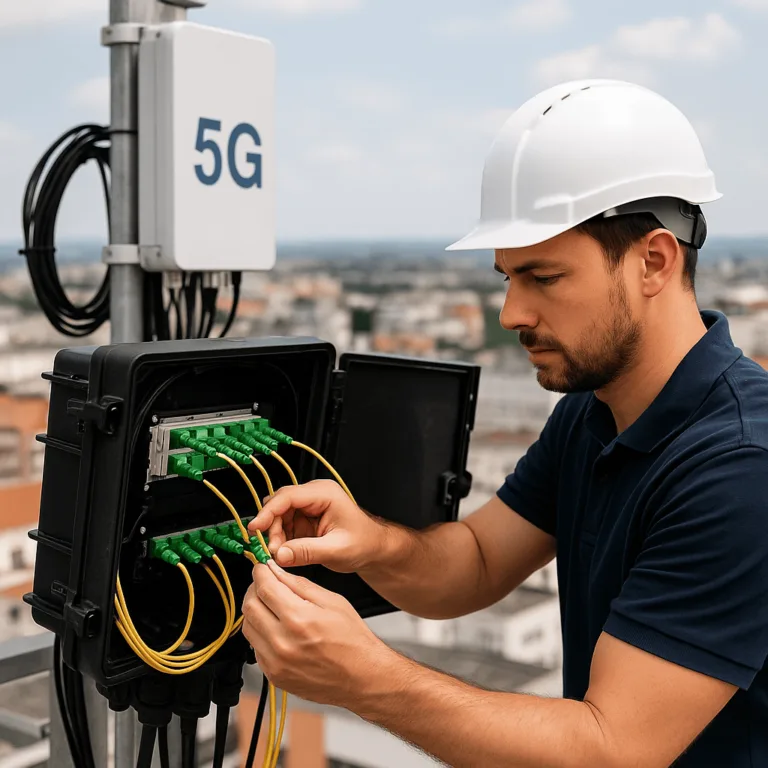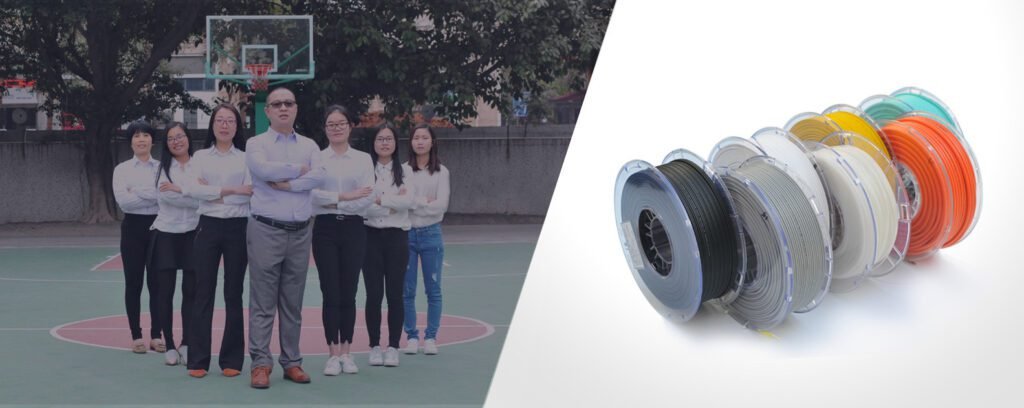Why Fiber Optic Cabling Matters for Data Center Infrastructure
As data centers continue to scale in complexity and throughput, structured cabling becomes the backbone of reliable performance. This article explains the different types of fiber optic cables used in data centers — from single-mode to MPO/MTP — and why proper selection, installation, and maintenance are crucial for avoiding data loss and downtime.
Common Fiber Types in Data Center Cabling
- Single-mode OS2: Long-distance, core-to-core connections
- Multimode OM3/OM4/OM5: High bandwidth over short distances
- MTP/MPO Assemblies: High-density cabling for modern hyperscale environments
Comparison Table: Fiber Types at a Glance
| Fiber Type | Max Distance | Bandwidth | Ideal Use Case |
|---|---|---|---|
| OM3 | 300m | 10Gbps | Access layer |
| OM5 | 400m | 100Gbps | Core or spine |
| OS2 | >10km | 100Gbps+ | Core routing |
Real-World Use Case
In a Tier III colocation center in São Paulo, replacing legacy copper cabling with MPO-LC fiber assemblies helped reduce rack-to-rack latency by 43%, while cutting airflow obstruction by 21%.
- Introduction
- Overview of data center requirements
- Importance of robust cabling infrastructure
2. Basics of Fiber Optic Cables
- Types of fiber optic cables
- Core components
3. Advantages of Fiber Optics in Data Centers
4. Design Considerations for Fiber Optic Infrastructure
- Determining the right type of fiber optic cable
- Layout and scalability concerns
- Compliance with industry standards
5. Challenges and Solutions
- Physical damage risks
- Managing upgrades
- Cost issues
6. Future Trends in Fiber Optic Technology
- Innovations in fiber optics
- The impact of emerging technologies like 5G and IoT on data center cabling
7. Summary
Cables are pivotal due to their ability to transmit large volumes of data at very high speeds over long distances without significant loss in signal quality.
1. Introduction
- Introduction
Overview of data center
- Overview of data center
The design operation of data centers must meet specific requirements to ensure efficiency, reliability, and security in processing large volumes of data. Firstly, data centers need ample capacity and scalability to address both current and future data demands, including sufficient space for physical servers, bandwidth, and processing power. High reliability is crucial, with a common target being 99.999% uptime, meaning only a few minutes of downtime annually. Additionally, redundancy in power supplies, data storage, and network connections is essential. Data centers also need to implement energy-saving technologies and measures, such as advanced cooling systems and energy-efficient hardware, to reduce operational costs and environmental impact. Security measures include both physical and cyber security, such as controlled facility access, surveillance systems, and robust cyber security protocols to prevent unauthorized data access and cyber attacks. Moreover, data centers require high-speed internet connections and multiple network service providers to ensure continuous and rapid connectivity, supported by high-quality fiber optic cables for substantial data transfer. Compliance with legal and regulatory requirements is also mandatory, including data protection laws and specific industry standards that regulate data handling and protection. Lastly, proper environmental control, including temperature, humidity, and cleanliness, is key to ensuring optimal hardware performance and preventing equipment failures.
- Importance of robust cabling infrastructure
Firstly, a robust cabling infrastructure is essential for ensuring high-speed data transfer and communication reliability in both commercial and industrial settings. High-quality cables and connectors help prevent data loss and signal degradation, which are crucial for maintaining the integrity and performance of network systems. In environments where real-time data processing and communication are vital, such as in data centers or financial institutions, the robustness of cabling can be the linchpin for operational efficiency.
Secondly, durable and well-planned cabling infrastructure supports scalability and adaptability of technological systems. As organizations grow and technology evolves, the need for additional hardware and upgraded connections increases. A robust cabling system designed with future expansions in mind can significantly reduce the time and cost associated with upgrades, ensuring that new equipment and services can be integrated seamlessly without disrupting existing operations.
Lastly, the safety and longevity of the entire IT network can depend significantly on the quality of its cabling. Poor cabling can lead to increased heat buildup and fire risks, especially in densely packed data centers. Moreover, robust cabling reduces the need for frequent repairs and replacements, providing a more stable and secure networking environment that minimizes the risk of downtime and associated losses. Thus, investing in high-quality cabling infrastructure is essential for the secure and efficient operation of any modern organization.
2. Basics of Fiber Optic Cables
- Types of fiber optic cables (single-mode vs. multi-mode)
Single-mode fiber optic cables use a very small core, about 8 to 10 microns in diameter, that allows the transmission of infrared laser light (wavelengths of 1310 or 1550 nanometers). This design minimizes the loss of signal strength over long distances, making single-mode fiber ideal for extensive network backbones, telecommunications, and cable television networks. It can transmit data at higher speeds and over distances of up to several kilometers without significant loss, which is why it is preferred for long-distance communication.
Multi-mode fiber optic cables, on the other hand, have a larger core (typically about 50 to 62.5 microns in diameter) that allows multiple modes of light to propagate. This larger size enables the use of less expensive light sources like LEDs but introduces modal dispersion, which can limit bandwidth over long distances. Multi-mode fiber is best suited for shorter distances, such as within a single building or on campus settings. It is commonly used in data centers, local area networks (LANs), and other applications where high data rates are needed over moderate distances.
- Core components (core, cladding, buffer, and jacket)
Fiber cables consist of four main components: the core, which carries the light signals and is made from glass or plastic; the cladding, which surrounds the core and reflects light back to maintain signal strength; the buffer coating, which protects the core and cladding from damage; and the jacket, the outer protective layer that shields the cable from environmental hazards and physical damage. Each component is crucial for the efficient and secure transmission of data over distances.
3. Advantages of Fiber Optics in Data Centers
Fiber offer several advantages in data centers, including higher bandwidth capacities and faster data transmission speeds, which are crucial for handling large volumes of data and high-speed internet services. They are also less susceptible to electromagnetic interference, ensuring more reliable and stable connections. Additionally, fiber optic cables are more durable and require less maintenance compared to traditional copper cables, making them more cost-effective in the long run. Furthermore, their smaller size and lighter weight allow for easier installation and more efficient use of space within data centers.
4. Design Considerations for Fiber Optic Infrastructure
- Determining the right type of fiber optic cable
- Single-Mode vs. Multi-Mode: Choose between single-mode and multi-mode cables based on distance and bandwidth requirements. Single-mode fibers are ideal for long distances due to their ability to maintain the integrity of each light signal over longer runs, whereas multi-mode fibers are suitable for shorter distances with high data rate transmissions.
- Cable Construction: Depending on the environment where the cable will be installed (e.g., outdoors, indoors, underwater, or aerial), the cable construction might vary to handle different stressors like moisture, chemical exposure, or physical forces.
- Layout and scalability concerns
- Network Design: Design the layout to minimize cable length and costs while ensuring adequate coverage and signal quality. Include additional conduits for future growth or consider using fibers with higher core counts.
- Future Proofing: Implement a design that accommodates future upgrades or increased demand. This might involve overprovisioning fibers or choosing upgradable components that can handle higher speeds and more connections.
- Access Points: Plan for adequate access points to ensure that new connections can be easily added. Scalability is crucial for adapting to technological advancements or expanding operational capacity.
- Compliance with industry standards
- Adhering to Standards: Follow relevant standards such as those set by the Telecommunications Industry Association/Electronic Industries Alliance (TIA/EIA). These standards dictate everything from optical fiber categories to installation practices, ensuring compatibility and performance across different devices and networks.
- Certification and Testing: Ensure all components meet quality and performance benchmarks through certification and regular testing. This not only ensures compliance but also guarantees network reliability and efficiency.
5. Challenges and Solutions
- Innovations in fiber optics
The future of fiber optic technology is driven by exciting innovations aimed at enhancing performance and expanding applications. Space-division multiplexing(SDM) is a notable advancement, allowing multiple data channels within a single fiber, significantly increasing data capacity without additional cables. Photonic crystal fibers, which guide light by diffraction through a micro-structured cross-section, promise better control over light properties and could lead to ultra-high bandwidth communications. Additionally, fiber optic sensors are gaining traction for their ability to provide real-time analytics in environments like smart cities and industrial automation. These innovations collectively push the boundaries of fiber optics, promising faster, more reliable, and expansive data communication networks.
- The impact of emerging technologies like 5G and IoT on data center cabling
The emergence technologies like 5G and the Internet of Things (IoT) is profoundly impacting data center cabling, necessitating adaptations to meet increased demands. 5G technology, known for its ultra-high speeds and low latency, requires data centers to have cabling that can handle significantly higher data throughput. This shift often involves upgrading to higher-grade fiber optics, such as OM5, which can support more extensive and faster data transmission.
Meanwhile, the IoT brings a surge in the number of connected devices, which generates massive amounts of data needing processing and storage. Data centers must thus expand their infrastructure to accommodate this influx, which includes not only more cables but also advanced management systems to ensure efficient data flow and minimize latency.
Together, these technologies push data centers towards more robust, scalable, and efficient cabling solutions, incorporating advanced fiber optic technologies and structured cabling systems that can adapt quickly to changes in network architecture and capacity requirements.
7.Summarize
In the rapidly evolving landscape of digital technology, the backbone of any efficient data center lies in its cabling infrastructure. Fiber optic cables, known for their high-speed capabilities and bandwidth, have become indispensable in modern data centers. They not only offer significant improvements over traditional copper cables in terms of speed and data handling but also provide a scalable solution that can meet the growing demands of big data and cloud computing. This article delves deep into how fiber optic cables are revolutionizing data center cabling, focusing on their design, installation, and the future direction of this critical technology.
To expand each section into a full article, one would delve into technical details, current market statistics, future projections, and expert insights to reach the word count and depth required.








